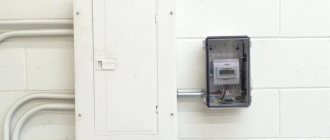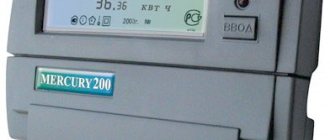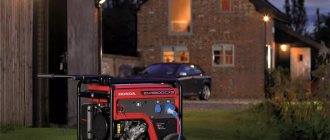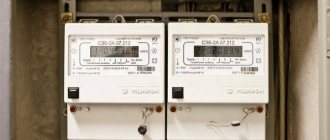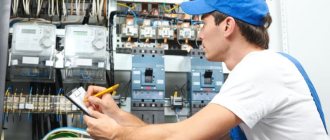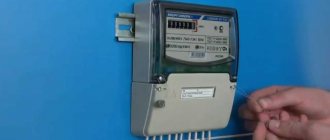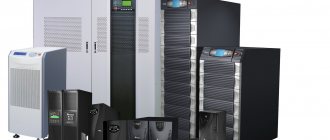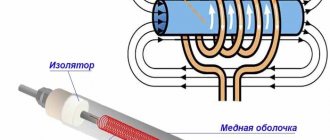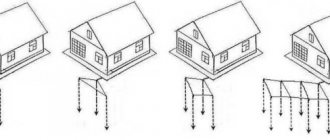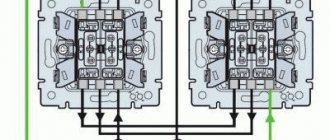- August 23, 2020
- Tools and equipment
- Daria Mingilevich
The concept of three-phase connection is not only found in industrial halls. We are increasingly encountering this in new buildings and even in old houses, if the electrical installation allows. This makes it possible to use devices with higher energy requirements, and a three-phase electricity meter becomes necessary.
In today's article we will look at how to choose a three-phase meter for your own home, apartment or other premises. We will also get acquainted with several options for popular counters.
In homes with high energy consumption
The device is also used in households. There are more and more electrical devices in our homes, which usually have a fairly high demand for electricity. This type of device is suitable if our electrical installation is adapted to this type of connection and we want to simultaneously use:
- electric heating;
- induction cooker;
- air conditioning system;
- Lots of small household appliances and electronics.
For induction cookers, it is recommended to use a three-phase network and, accordingly, a three-phase electricity meter.
How does a three-phase meter work?
First of all, let's find out the principle of operation and which three-phase meter to choose for a private home.
The operating principle of a three-phase energy meter is almost the same as for models adapted to 1 phase. The device takes measurements for each cable separately, although we can see the total on the screen. These are really three 1-phase meters integrated in one housing. Most often we come across electronic devices that have special integrated circuits. When exposed to current flow, they generate measurable pulses, which we interpret as kWh consumed.
Types of three-phase devices
Meters can be divided into two types: single-tariff and multi-tariff. Some models have a division between daytime and evening rates.
A small microprocessor is responsible for locating tariffs and storing information in the device’s memory. Simply put, you can view the meter data for any convenient numbers.
Analog induction energy meters
The operating principle of such meters is similar to the single-phase device model.
Connection diagram for 3 phase meter
Electrical energy passing through the induction coil forms an electromagnetic field that acts on the iron disk. So he starts moving.
Is unbalanced meter load a problem?
We often wonder how the asymmetric load on the wires affects the accuracy of the readings, and also which three-phase meter to choose for a private home. Let's imagine a situation in which electric heating is connected to one phase, an induction cooker is connected to another, and the third phase is responsible for the remaining small household appliances. In summer we do not heat the room, so one phase is completely unloaded. Does this affect the measurements taken? A very similar problem is the operation of a device with only one or two phases connected.
Fortunately, electronic electricity meters are excellent at dealing with such problems. We don't need to have a symmetrical load or even all phases connected to the device. This is due to the meter design. Each phase is measured completely separately, and the zero measurement is simply added to the non-zero value and displayed on the LCD screen.
What advantages do electronic devices have over induction devices?
Regardless of the fact that electronic meters are more expensive than induction meters, they still have a lot of advantages that make their widespread use justified.
Electronic meters have a high accuracy class, usually from 0.5 to 2.0, and this is maintained in difficult conditions or low or rapidly changing loads.
Electronic meters are capable of multi-tariff metering of electrical energy, which allows consumers to save considerable money.
In addition to the amount of energy consumed, electronic meters can also monitor its quality, which allows you to have control over the fulfillment of contractual obligations by the energy supply company.
In addition to active power consumption, electronic meters can also measure reactive power, and can also keep track of electricity consumption in two directions.
The data collected by the electronic meter is stored in the internal non-volatile memory of the device. This data can be accessed through a convenient digital interface.
The use of electronic meters makes it possible to combat cases of electricity theft much more effectively. Any attempt at unauthorized access is recorded by such a counter.
Electronic meters have a digital interface that allows you to remotely read various data from them, as well as program them for multi-tariff accounting at two or more tariffs, which apply to certain time periods.
Electronic meters usually have smaller dimensions than induction meters, which allows them to be installed in standard electrical panels along with other modular electrical equipment.
Manufacturers declare the service life of electronic meters to be at least 30 years, and the time intervals between their verifications range from 10 to 16 years.
One of the main disadvantages of electronic meters is their low resistance to lightning pulse discharges, from which they often fail. The share of induction meters is still quite high and they are not going to lose their positions, since their reliability has been proven by more than a century of experience in their operation. Is it true
Is the phase connection order important?
The instructions included with the electronic electricity meter clearly indicate that the manufacturers recommend connecting the phases in a specific order. This has to do with diagrams. However, if it turns out that they are not connected correctly, you must call an authorized power plant employee if the meter belongs to him. In the case of a submeter, a qualified electrician must be called.
If you have a modern electricity meter, the LCD will most likely show a message indicating an incorrect phase connection. Some models will indicate this situation by flashing or turning on an LED. In this case, the cables must be swapped so that the device can work. Depending on whose property the meter is, you must call the power company or an electrician with the appropriate permit.
Electric meter connection diagram
Perhaps there are few lucky people who managed, after going through such a difficult and costly “action” as repairs, to come out of it with strong, healthy nerves and saved money. Naturally, we entrust some of the work to strangers who are not always responsible and reliable.
So you subsequently have to overpay, correcting mistakes and errors made by someone. The same danger can “await” us during independent experiments, when we take on a task without studying it thoroughly and without possessing the necessary knowledge and skills.
This is especially true for such “specific” areas as electrical and installation of utilities in the apartment.
One of the difficult tasks that a “home electrician” faces during the installation process is connecting an electric meter, which is necessary to account for electrical energy and control its consumption. In order to do this job correctly, you will need an electric meter wiring diagram. As a rule, it is located on the back cover of this device.
Currently, for electricity metering purposes, two types of meters are used:
Features of the circuit design of single-phase meters
Single-phase meters are most often used in standard city apartments. Connection to the network is carried out directly, without transformers. The terminal block of such a device has four contacts.
- the first is for phase input;
- through the second, the phase is output to the load (to electrical equipment located in the apartment);
- the third is used to enter zero;
- the fourth – outputs zero to the load.
In addition, there is a special voltage screw used in the process of disconnecting the coil in induction-type meters when they are checked by regulatory authorities.
The connection diagram for a single-phase meter is shown below.
To indicate phase “A”, a yellow line is used here, phase “B” is green, “C” is marked in red.
In addition, there are schematic images of the neutral wire N, indicated in blue, and the ground conductor (PE), which is a yellow-green line.
Advice
As an alternative to the standard package switch, this circuit allows the use of a two-pole circuit breaker.
In addition, you can use the wiring diagram for a single-phase direct connection induction electric meter. In this case, red is used to depict the phase wire and current coil, and the voltage coil and neutral wire are highlighted in blue.
Three-phase meters and their connection diagram
As for three-phase electricity meters, the method of connecting them is selected depending on the characteristics of the electrical installation. There are several connection options:
- direct connection;
- via current transformers into a 4-wire network;
- through transformers from a two-element electric meter to a 3-wire network;
- into a 3- and 4-wire network through current and voltage transformers;
- into a 3-wire network using 2 current transformers and the same number of voltage transformers.
The “three-phase” terminal block includes eight contacts. The principle of its operation is similar to that discussed earlier, single-phase, with the only difference that the number of phases will be greater.
The most common installation option used in residential construction is the direct method of connecting a three-phase electrical energy meter to a 4-wire network with a voltage of 380 V. Its diagram is shown below.
The phase sequence should be carried out clockwise: ABC–BSA–CAB.
The reverse order of alternation of voltage phases (ASV-SVA-VAS) contributes to the emergence of an additional error in the device and can lead to its “self-propelling” (if you connect an induction active energy meter).
If the contacts in the reactive energy meter are connected in this way, it will begin to rotate in the opposite direction, which is also a violation of its operating conditions.
Problem with old meters
Problems with measuring electricity consumption may arise if you have an old-style three-phase electricity meter (inductive). In such situations, a countdown is often observed. For proper operation it is necessary to change the phase connection. You also need to understand which three-phase meter to choose for a private home if it is replaced.
When it happens that when you start one of your household electrical appliances, your fuses turn off, this means that the electrical installation is overloaded. This is for your own safety. To be able to use any number of devices without any obstacles, you must ask the energy company that supports you to check the connection capacity and increase it accordingly.
If you only have one phase, it's worth finding out whether the specifications allow you to change the connection to three-phase. You can also easily find out if you are using it anymore. Just check if the meter in your apartment is three-phase.
Types and rules for choosing an electric current converter
Transformer equipment that reduces current (CT) is classified according to various characteristics, including conversion ratio. This equipment is required if the facility consumes power that is several times greater than the capabilities of a conventional node.
The CT converts the current to a level that allows you to connect conventional one- or three-phase electricity meters for monitoring and create a line protection system.
Classification
By installation method
According to this principle, CTs are divided into:
- supporting (installed on the surface);
- pass-through (attached to the busbar);
- tire (attached to the tire);
- built into power electric current systems;
- detachable (installed on cables).
By type of insulation
An electric current transformer can be:
- with epoxy resin or special varnish;
- in a plastic case;
- with solid insulation made of porcelain, bakelite. hard plastic;
- with a viscous composition (oil);
- filled with gas;
- with oil-paper insulation.
What parameters to consider
To calculate the readings of an electric meter with current transformers, the transformation ratio is important. It can be single-stage or cascade (multi-stage). The last type of CT is distinguished by the presence of several secondary windings and a large number of turns in the primary winding.
The main condition when choosing a converter is that the electric current of the secondary winding must be the same or less than the electric current for which the electric meter is intended.
It is not advisable to buy a TT with too high a transformation level. With such a choice, you will have to install a counter at the receiving input. More popular are converters with one coefficient, which do not change the reading during operation. When using them, the problem of how the readings of an electricity meter connected through current transformers are calculated is easier to solve.
Calculation of electricity using a meter with current transformers can only be carried out if the transformation ratio is known. It must be indicated in the technical documentation with which the TT was sold and on the body. If you suspect inaccuracies in the displayed figures, you can calculate the coefficient yourself.
To calculate the ratio, you need to connect the converter to the electric current that creates a short circuit in the secondary winding and measure how many amperes there are in it.
Transformation ratio is the ratio of the values of the supplied electric current and the current passing in the secondary winding.
For example, if a short circuit is caused by 150 A, on the secondary winding 5 A, the effective coefficient is 30. This is a more accurate value than the nominal value, which is determined by the rated electric current of the primary and secondary windings. The result of calculating electric meter readings with current transformers is more accurate.
Review of popular models for a private home
A 3-phase electric meter is more expensive than similar single-phase devices. However, it gives you much more options. Therefore, there is a huge problem when it comes to the question of which three-phase meter to choose for a private home. We present popular models that you can buy alone or get from your electricity supply company.
Let's look at popular models of three-phase meters.
Zemel 16EC3gw
Basic model that works well in a four-wire network. This is an excellent three-phase electricity meter for a private home. Its features:
- multi-zone active energy measurement;
- time zone control;
- indication of external magnetic field;
- alarm failure.
This model is suitable for use as an electric meter if, for example, two families live in the same house. As you can see, you don’t need to make a lot of effort to choose a three-phase meter for a private home.
Bemko A30-EM3-L
Today, finding a meter on the domestic market is a big problem. When deciding which electricity meter to choose for a private home, it is good to choose the Bemko A30-EM3-L.
This is a slightly more expensive model, equipped with an LED display and three diodes indicating current measurement in all three phases. An accuracy of 0.01 kWh allows accurate measurement of energy consumption. The device operates on a four-wire network. The maximum load is up to 100 A. So this is one of the acceptable options for three-phase meters for a private home.
PAC2200
The PAC2200 is a good option. This is a smart energy meter from the well-known Siemens company, which is used both in infrastructure and in industry. The device measures all basic electrical quantities: voltages, currents, power and energy. The modular design and DIN rail mountability allow it to be used in areas where space is limited, such as drain boxes. The built-in Ethernet or RS485 communication port allows flexible adaptation of the network structure to the user's needs.
Advantages:
- Compact design - DIN rail mounting allows the meter to be installed in areas with limited space, such as drain boxes.
- Convenient connection diagram for a three-phase meter in a private house.
- Built-in Communications - The PAC2200 energy meter has a built-in Ethernet (Modbus TCP/IP) or RS485 (Modbus RTU) communications port. This functionality allows the device to be integrated with superior systems such as Powerconfig or Powermanager.
- Embedded Web Server - The PAC2200 with Ethernet connectivity allows you to remotely view measured parameters from each network access point using a standard web browser. This feature allows you to view both current and historical data (for example, energy consumption on certain days of the week) without the need for additional software. You can also view parameters measured on mobile devices, phone or tablet.
- Built-in memory - the PAC2200 energy meter archives energy measurement data. Thanks to this, the user can easily check the energy consumption measured by the meter, for example on individual days of the week. Using this functionality is an alternative to a full energy management system.
- Integration with EMS Powermanager - SENTRON Powermanager energy management system has built-in libraries for working with PAC2200 meters, making the integration of meters in this application very simple and can be limited to setting the IP address of the device.
Differences between single and three phase control devices
Devices for monitoring power consumption, made in a single-phase version, are installed in an alternating current network and are capable of operating with a voltage of conventional 220V. On all lines of such networks, only two conductors are used - phase and neutral.
Electrical networks that use three-phase alternating current require an appropriate 3-phase control device. They have completely different wiring patterns, since each line consists of three, four or five conductors. Three wires are phase, and the rest perform the functions of zero and ground.
Connection to a single-phase electrical network has become widespread at facilities with power consumption up to 10 kW. Therefore, to account for consumed electricity, single-phase meters are used, which are characterized by a simple design, convenient operation, and the ability to be installed in a convenient location. However, nowadays there is a lot of powerful equipment that requires direct connection to three-phase power.
In the private sector, electric boilers and water heaters, electric stoves and asynchronous motors are often used. When such devices are connected to the network, in accordance with their technical characteristics, the quality of their work increases noticeably. In addition, the so-called phase imbalance is prevented, which often occurs when several powerful devices are simultaneously connected to one line. Three phases allow you to evenly distribute the load and avoid negative consequences.
Price
What about the price of a new meter? Much depends on what device the buyer chooses. Of course, meters designed for a single-phase network are cheaper, and those adapted for a three-phase network are more expensive. You can also notice a strong difference between induction and electronic models - the latter are also more expensive.
What three-phase meter is needed for a private home? There are plenty of options, but if you are not sure that you have enough knowledge, consult with a specialist. The minimum amount that will need to be paid for a three-phase meter is 1,000 rubles. For more expensive models you will have to pay a much larger amount. However, in order not to overpay, it is better to call a specialist to your home. He will be able to name the appropriate amount and suggest parameters for choosing a counter. You should not buy a three-phase meter blindly, as there is a huge risk of losing money.
Advantages of new electronic metering devices
The first glance at the front panel of an electronic device can cause some confusion. Instead of the usual mechanical indicator, there is a digital display and some strange buttons.
Electronic meter front panel
In fact, there is nothing complicated; below we will describe in detail how to take readings from various electronic models. As for their advantages, these include:
- Indication of the current date and time.
- Saving readings for the previous month in the device memory.
- Transferring data with readings to the control center of the energy company providing the services.
- Possibilities of multi-mode tariffing.
- The current sensor can be a shunt, a current transformer, or both.
It makes sense to consider the last point in more detail.
How to connect a three-phase meter in a private house or apartment?
This question, like the question of checking the correct operation of the meter, requires an accurate answer. To properly connect the electricity meter, you must contact the appropriate energy company, who will send a qualified employee to you. Each such device must have an inspection stamp indicating when it was last checked. A power plant employee will install the seal.
We must also not forget that you should immediately contact the relevant energy supplier after connecting the meter in order to sign a contract for the supply of energy on the terms previously agreed with the company representative. The contract should include information about whether you have access to single-phase or three-phase electricity and whether you will be billed under a single or dual tariff system. This is a very important step, because most companies only issue a preliminary agreement before connecting the meter. Of course, this document is in no way binding and you may be held liable for using electricity from an illegal power source and without a valid contract with the supplier.
Selecting an electricity meter
You can connect not the first meter you come across. Before purchasing, you need to decide on its parameters:
- Operating principle;
- Number of phases;
- Calibration interval;
- Accuracy of readings;
- Number of possible tariffs;
- Installation method;
- Voltage class.
Let us consider the selection parameters in more detail, because they determine how accurate the measurements will be, which affect the amount of payment for the use of electricity.
Counter: induction or electronic?
Passing through an induction counter, the current causes the metal disk to rotate. In this case, the electricity is calculated taking into account the number of revolutions of the rotating element: each full circle corresponds to the same work done by the current. Induction meters are inexpensive, but give less accurate readings. Everyone once had such a counter.
Modern meters do not have moving elements. They are called electronic. The amount of energy expended is considered semiconductors or microcircuits. Electronic analogues are expensive. But the accuracy of their readings is high. If you consume a lot of energy, then a difference of 2% will be significant for you.
How many phases?
The choice of the number of meter phases depends only on which line you are connecting to: single-phase or three-phase. If for a single-phase network, take an electric meter designed for one phase. Otherwise, purchase a three-phase analogue. In the city there is definitely a single-phase line, in a holiday village it is the same, but in a private house, cottage or production workshop you need to clarify how many phases the line has: 1 or 3.
Calibration interval
It shows how long it will take for someone to come to you to pick up the meter to check it for correct operation (example: MPI - 15 years). The test is carried out in RosTest, and the countdown to the next test begins from the date indicated in the form and on the seal.
Reading accuracy
The accuracy class of old calculating devices lies in the range of 0.2-2.5%. Modern analogs measure with an accuracy of 2%.
Number of tariffs
Single-tariff meters can count energy in only one mode, two-tariff meters - in two, multi-tariff - in several. Among private houses and apartments, two-tariff devices have become popular: from 7.00 to 23.00, energy is calculated as usual. And at night, the speed of revolutions drops and 1 revolution at night is equal to 0.7 revolutions during the day.
Two tariffs are convenient for people who consume a lot of electricity or actively spend it only at night. Example: 500 kWh are consumed per month, 300 of which are consumed at night with a coefficient of 0.7. The meter will only count 210 kW per night. This is a saving of 90 kWh of energy, which, depending on the region, ranges from 180 to 360 rubles per month.
Connection method
Each meter indicates the minimum and maximum direct current in Amperes. If it is smaller or larger, then installation via a current transformer is required.
Voltage class
For 100-, 220- and 380-volt lines, meters with the appropriate voltage class are needed. Sometimes classes differ from nominal values on a larger side. This is necessary to protect the counting device from power surges in the network.
Gear ratio
Shows how many revolutions the induction device (or electronic indicator flashes) must make in order for 1 kW*hour of energy to be counted. The gear ratio is indicated on the body. In old meters it is several hundred, in new devices it is thousands. Usually it's 3200.
Example
The photo of the counter shows that (click to enlarge the picture):
- Voltage class – 230 Volt (1 phase);
- Connection method - direct at a current of 5-60A, through a transformer at a value below or above the range;
- Accuracy (circled) – 1%;
- Gear ratio – 3200.
The alternating current frequency is also visible - 50 Hz. But it is the same for Russian power lines, so you can turn a blind eye to this parameter.
